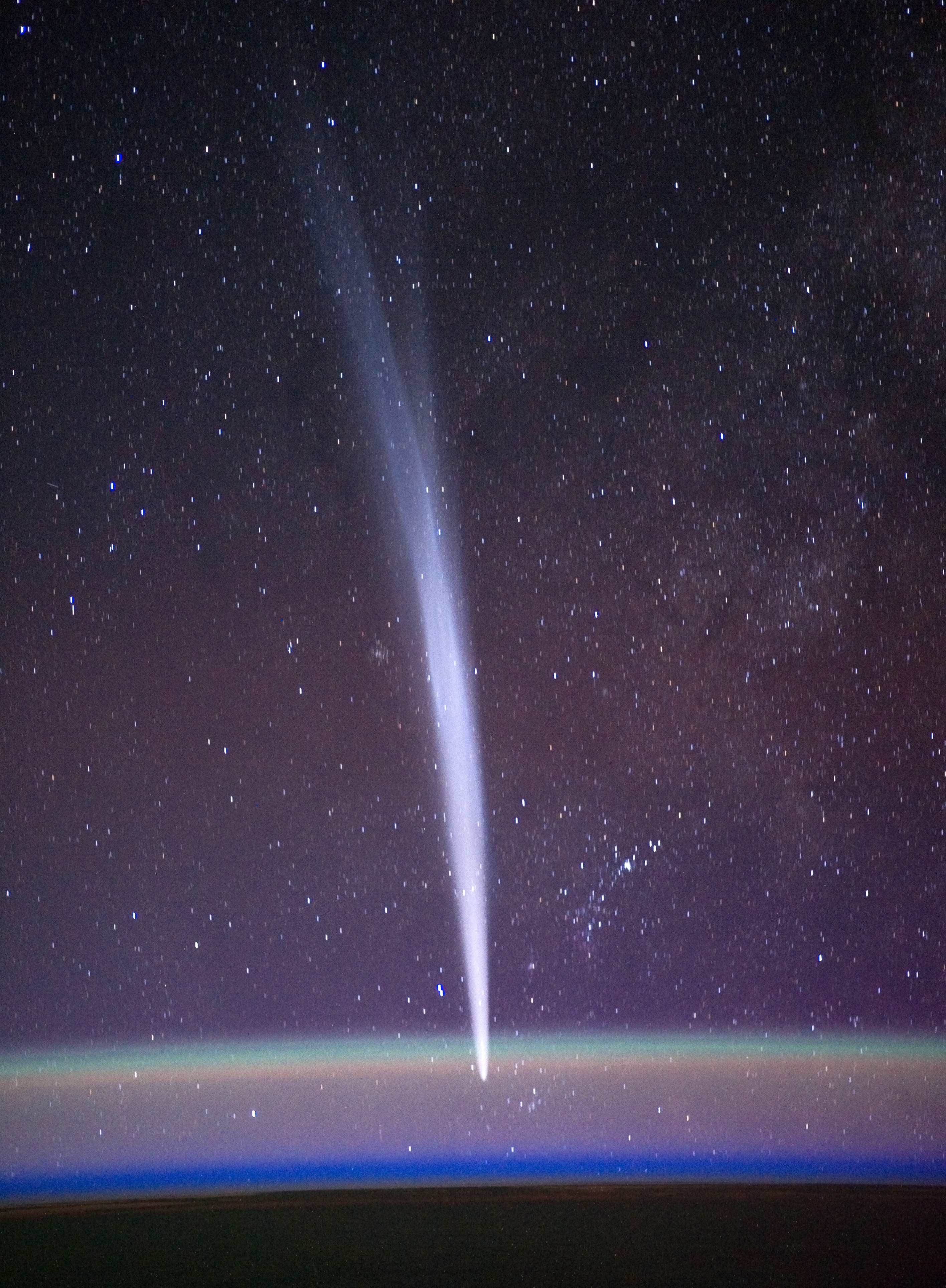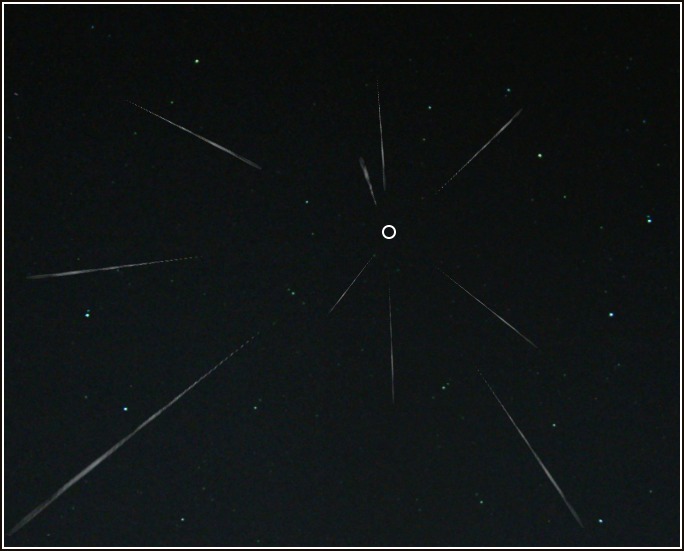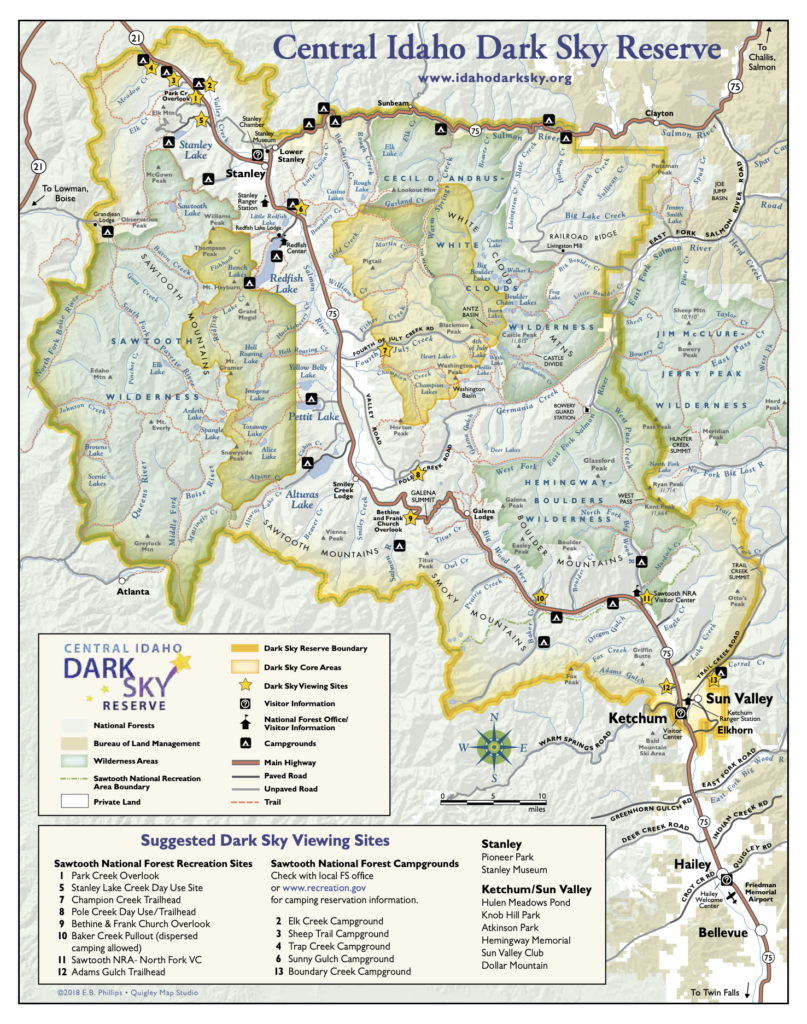
Tonight (2021 Aug 11), one of the most prolific meteor showers in the year, the Perseids, will crescendo and light up Idaho skies. What are the Perseids, what should you expect to see, where should you go to see them?
Fire in the Sky
In his chart-topper “Rocky Mountain High”, John Denver sings “the Colorado rocky mountain high // I’ve seen it rainin’ fire in the sky”. This reference apparently hearkens to the Perseid meteor shower that Denver viewed from the Rocky Mountains in the 1970s. In fact, calling a meteor shower “fire in the sky” is not just poetic license, it’s decently accurate scientific description as well.
It turns out that the Solar System is kinda dirty: like dogs shedding their winter coats, comets spray ice, gas, and dust as they fly past the Sun. This cosmic clutter goes into orbit around the Sun, at least for a little while.
When the Earth passes through one of these dust clouds, the dust crashes into the atmosphere at super-sonic speeds, which quickly bakes the grains (called “meteors” once they hit the atmosphere) to thousands of degrees. Depending on the size and composition of the dust, the resulting plasma streak may burst into a fireball of blue, green, or yellow.
The Perseids meteor shower originates from Comet Swift-Tuttle, which passes near the Sun every 133 years when it replenishes the supply of dust for its associated meteor shower.

Readying for the Radiant
The Perseid meteor shower occurs every year, going from mid-July until late August, but it peaks right about now (August 11), as Earth passes through the densest part of the dust cloud. Predictions for tonight’s show top 75 meteors per hour.
Even as I write this (Aug 11 at 9:30am), the meteors are passing through Earth’s atmosphere, but they are hidden behind the Sun’s glare. Once the Sun sets (about 9pm MT) and the sky gets dark (after 10pm MT), though, expect the show to start.
The peak in meteors will happen pretty late, between midnight and dawn. That’s when the part of the Earth’s surface you’re riding on turns into the direction that the Earth is orbiting. Then, meteors will appear to streak out of the constellation Perseus, called the meteor shower’s “radiant”. Hence the name.

Off to See the Blizzard
So how and where can you go to see this storm of plasma snow? Short answer: with your eyes and anywhere dark.
Longer answer: meteors streak across the sky in mere seconds (they travel upwards of 30,000 miles per hour), so they are basically impossible to track with a telescope. So don’t bother to bring your scope or binoculars.
You won’t need them anyway. Like Venus, meteors can be bright enough to cast shadows on the ground, so you won’t struggle to see them the way you might with darker objects.
The best place to observe the show is somewhere dark with clear skies. Fortunately, Idaho is slated to have mostly clear skies tonight with just a bit of smoke, so almost anywhere out of the glare of lights will do. Within a short drive of Boise, your best bets are probably the observatory at Bruneau Dunes Park or Dedication Point near Kuna. Both places can be tricky to find in the dark, though, so be sure to arrive before sunset.
If you can make it, the absolute best place in Idaho to stargaze is within the Central Idaho Dark Sky Reserve, CIDSR Sprawling across central Idaho from Ketchum up to Stanley, CIDSR is the only internationally recognized dark sky reserve with gold-tier status in the United States, providing a breathtakingly velvet sky.

Meteor showers give us more than just regular cosmic fireworks — they also make possible long-distance radio communication. The same atmospheric friction that burns up the meteors also deposits and distributes their sodium and other elements in the ionosphere, the atmospheric layer about 50 miles (80 km) above our heads.
These chemical elements reflect radio waves, allowing them to travel over the horizon and beyond line-of-sight. This is the reason that radio stations are often easier to receive at night: the Sun’s ultra-violet rays deplete the ionosphere but are gone at night.
For more advice, consult your local astronomy club — http://www.boiseastro.org.
